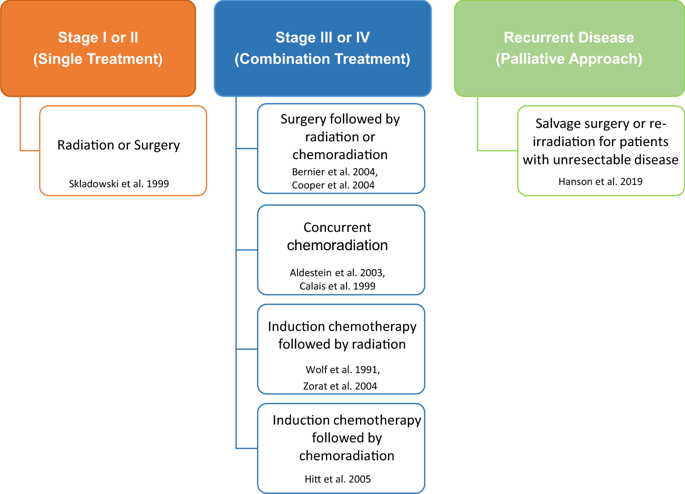Our official English website, www.x-mol.net, welcomes your
feedback! (Note: you will need to create a separate account there.)
Radiation resistance in head and neck squamous cell carcinoma: dire need for an appropriate sensitizer.
Oncogene ( IF 6.9 ) Pub Date : 2020-03-10 , DOI: 10.1038/s41388-020-1250-3 Marsha-Kay N D Hutchinson 1 , Michelle Mierzwa 2 , Nisha J D'Silva 1, 3
Oncogene ( IF 6.9 ) Pub Date : 2020-03-10 , DOI: 10.1038/s41388-020-1250-3 Marsha-Kay N D Hutchinson 1 , Michelle Mierzwa 2 , Nisha J D'Silva 1, 3
Affiliation

|
Radiation is a significant treatment for patients with head and neck cancer. Despite advances to improve treatment, many tumors acquire radiation resistance resulting in poor survival. Radiation kills cancer cells by inducing DNA double-strand breaks. Therefore, radiation resistance is enhanced by efficient repair of damaged DNA. Head and neck cancers overexpress EGFR and have a high frequency of p53 mutations, both of which enhance DNA repair. This review discusses the clinical criteria for radiation resistance in patients with head and neck cancer and summarizes how cancer cells evade radiation-mediated apoptosis by p53- and epidermal growth factor receptor (EGFR)-mediated DNA repair. In addition, we explore the role of cancer stem cells in promoting radiation resistance, and how the abscopal effect provides rationale for combination strategies with immunotherapy.
中文翻译:

头颈鳞状细胞癌的放射抵抗:迫切需要适当的敏化剂。
放射治疗是头颈癌患者的重要治疗方法。尽管在改善治疗方面取得了进展,但许多肿瘤获得了放射抗性,导致生存率较低。辐射通过诱导 DNA 双链断裂来杀死癌细胞。因此,通过有效修复受损DNA来增强抗辐射能力。头颈癌过度表达 EGFR,并具有高频率的 p53 突变,这两者都增强 DNA 修复。本综述讨论了头颈癌患者抗辐射的临床标准,并总结了癌细胞如何通过 p53 和表皮生长因子受体 (EGFR) 介导的 DNA 修复来逃避辐射介导的细胞凋亡。此外,我们还探讨了癌症干细胞在促进抗辐射性方面的作用,
更新日期:2020-03-10
中文翻译:

头颈鳞状细胞癌的放射抵抗:迫切需要适当的敏化剂。
放射治疗是头颈癌患者的重要治疗方法。尽管在改善治疗方面取得了进展,但许多肿瘤获得了放射抗性,导致生存率较低。辐射通过诱导 DNA 双链断裂来杀死癌细胞。因此,通过有效修复受损DNA来增强抗辐射能力。头颈癌过度表达 EGFR,并具有高频率的 p53 突变,这两者都增强 DNA 修复。本综述讨论了头颈癌患者抗辐射的临床标准,并总结了癌细胞如何通过 p53 和表皮生长因子受体 (EGFR) 介导的 DNA 修复来逃避辐射介导的细胞凋亡。此外,我们还探讨了癌症干细胞在促进抗辐射性方面的作用,











































 京公网安备 11010802027423号
京公网安备 11010802027423号